INSPIRATION
The Great North Road to Turkana
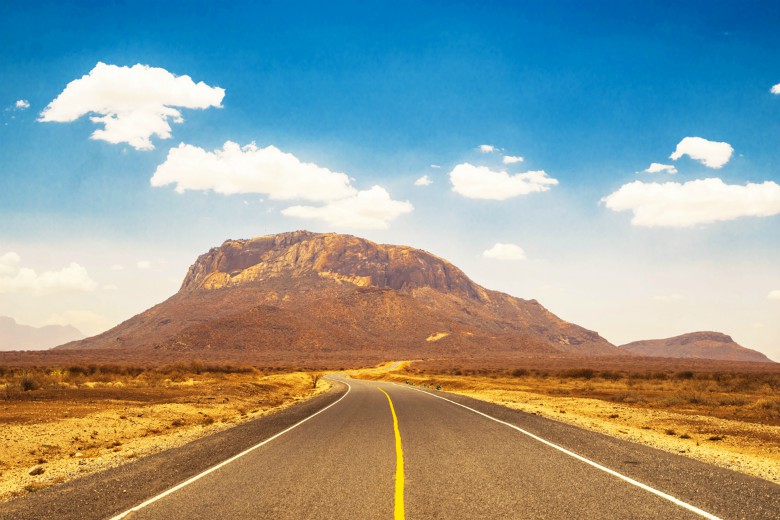
The Kenyan Camper has pretty much crossed all of Kenya, but Lake Turkana has remained just out of reach. When finally he got the call, he decided it was time to put a long-held dream to bed.
The Great North Road
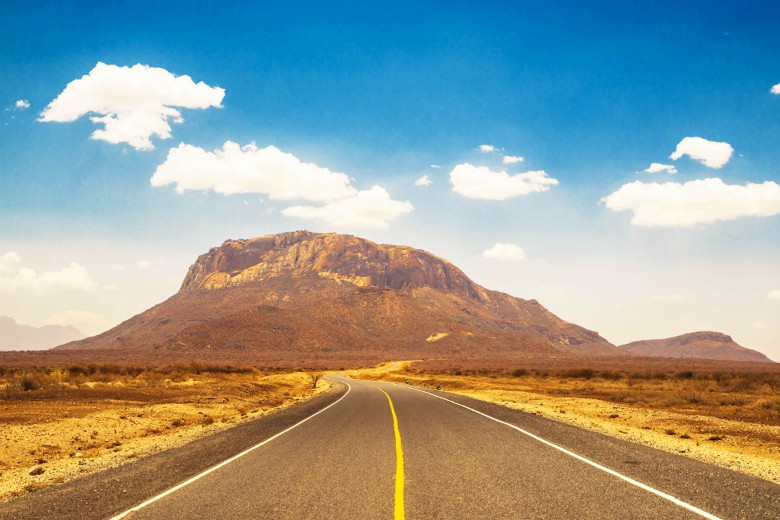
The year: 2001. The scene: a library in the heart of the city. A young voracious reader comes across a dogeared copy of Count Samuel Teleki’s journey to what would come to be known as
Lake Turkana.
In the many years since then, I’ve made numerous trips around Kenya but have always had to hang my head in half-hearted shame anytime I have been asked if I have travelled to the lake. All that changes when I get a call asking, “You down for the lake?” I stifle a scream and reply as nonchalantly as I can, “Yes, definitely.”
My day starts at the ungodly hour of 3.45 am on a Tuesday with a haphazard, last-minute packing frenzy. Shortly after I meet my fellow adventurers: Catrina – editor / leadfooted driver; Brian – photographer / black denim aficionado and Samir – photographer / recent retiree. With the car packed with several days of woefully inadequate supplies, we set off for Nanyuki.
This part of the trip is nothing we haven’t seen before so Catrina takes this opportunity to tell us about the number of times the car we’re using has broken down recently. It’s too late for second guesses – we’re committed. After a quick breakfast, the trip becomes interesting as we head down the great north road to Isiolo and on to Archers Post. When we get to Mount Ololokwe, we make the first of what will be innumerable stops for photos.
STAR-STUDDED SKIES
At Laisamis, we leave the tarmac for the graded wind farm road for our first night in one of my favourite villages, Ngurunit, which is located in the shadow of the Ndoto Mountains. We arrive too late to investigate the rock slides so, after a well-deserved shower and a fantastic egg curry, the evening is spent out on the lugga photographing the star-studded skies for which Northern Kenya is famous. Morning comes too soon for me, but a stunning sunrise and great views of Mount Poi make up for a fitful sleep.
Ngurunit (Brian Siambi)
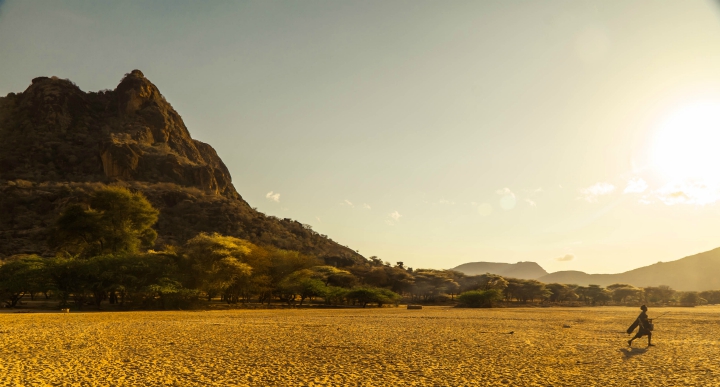
We continue north through the Korante Plain with the Nyiru Range to the east breaking the monotony of the landscape. This road has really improved the accessibility to the Eastern side of the lake, I do hope the county continues to maintain it. We stop at the Lake Turkana Wind Power Project’s offices to beg, borrow, or steal some fuel and have a short stand-off with three armed guards in army fatigues. It ends amicably or I wouldn’t be writing this. Onwards, we marvel at the scale of this project with its 365 wind turbines – it’s a massive and impressive undertaking.
Lake Turkana Wind Power Project (Brian Siambi)

We soon leave it behind and the excitement is palatable as we near our first glimpse of the lake. After a small rise down into a valley surrounded by miles of volcanic rock, we see the Jade Sea. It’s an emotional moment for me that has been 16 years in the making. Nothing I have read even comes close to describing the scale or the colour. There is a general consensus among the group that no image can do it justice: how do you capture a breeze on your skin, the sun on your face or the sense of accomplishment in your heart in a photo?
A HORRIBLE BIT OF ROAD
The shore road to Loiyangalani (Brian Siambi)
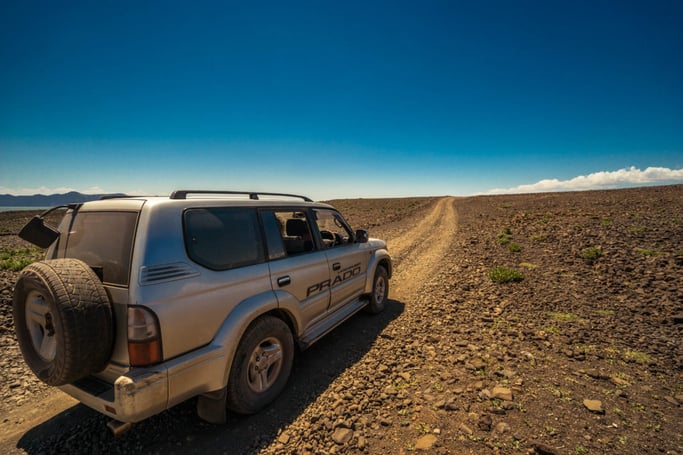
After soaking it in, we drive along the lake to Loiyangalani along what can generously be described as a moonscape of a road, the car groaning and rattling in protest. This is easily the worst bit of road of the entire trip. Owing to the slow speeds with no wind to cool us us off, we’re basically human-sized muffins baking in a metal box. We arrive in town ‘shaken not stirred’ and set up camp at the Palm Shade Resort, a green, shaded site with good hearty meals (the Nile Perch is a must). Camping is great but it’s a plus if someone else can sort the cooking.
Over the next two days, we explore the town. We enquire about a trip over to South Island which is slightly undersold by the park warden, who says, “What’s there to see on the island? Well there’s an old airstrip there.” As exciting as that sounds, we give it a miss. It does little to detract from the overall experience of being here. We experience glorious sunsets and sunrises, swim in the refreshing waters, chat with the local fishermen, enjoy perfect sundowners with the stunning landscapes dominated by Mount Nyiru and Kulal. This all serves to create a sensory overload that calms the mind and soul. Our time here comes to an end much too quickly. Why Brian packed not one but two pairs of black jeans for a desert trip remains unanswered.
Palm Shade Resort, Loiyangalani (Brian Siambi)
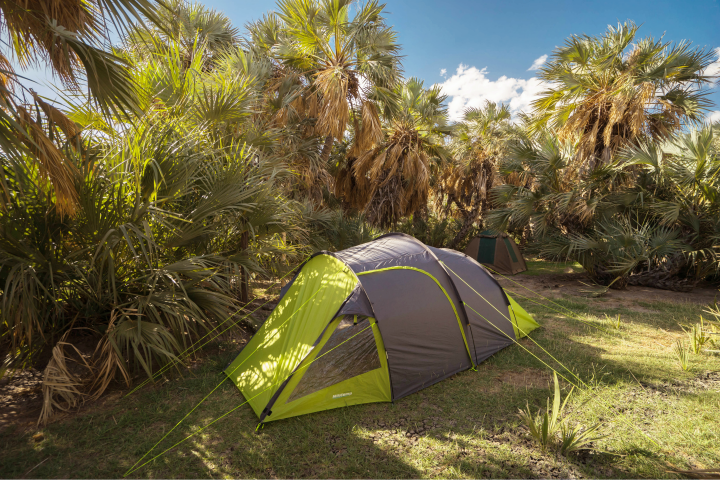
We bid farewell to Loiyangalani with a final stop at an El Molo village. Village visits have never been my thing, but the guides are cool guys and make it slightly less uncomfortable. What really hits home is seeing how Ethiopia’s Gibe series of dams has affected the lake levels. It’s a horrifying glimpse into the future
HEADING TOWARD THE DESERT
Heading to the desert
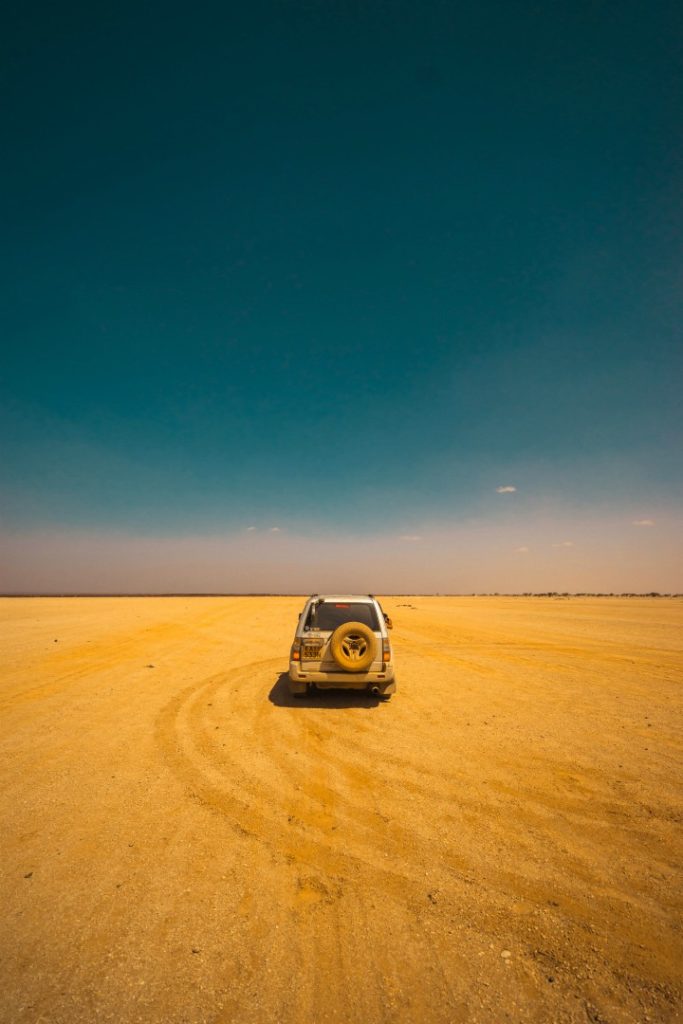
We drive away from the lake with the car now hissing and spitting in protest – ignoring the sounds is the only option at this point. After a quick soda at North Horr, we continue on to Kalacha for the night. At an oasis we have an altercation with some herders over the photos we’ve taken but after lengthy negotiation, all is resolved, a good reminder to always ask for permission before taking a photo.
On arrival in Kalacha, we wasted a good two hours or so looking for a place to sleep only to end up at the first place we had seen, the African Inland Church Mission. There are rumbles of discontent as to the quality of accommodation, but I love it; a bed, water, what else do you need? A cat steals our last pack of sausages and Samir throws down another smashing curry. All is well with the world.
African Inland Church Mission
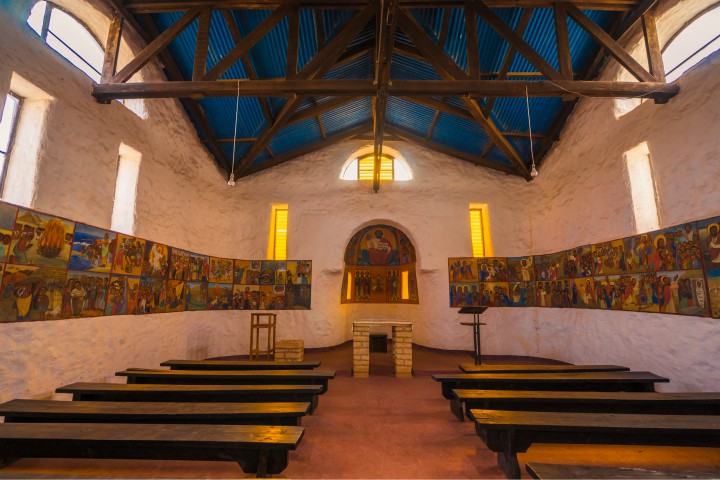
The next morning, we visit Kalacha’s Catholic church with its ornate Orthodox murals painted by Ethiopian artists. I’m delightfully surprised by how beautiful it is. But now we need to concentrate and gird our loins to cross the infamous Chalbi Desert. The horror stories of cars lost in the desert or stuck for days on end in the sand have dominated our conversation in the days past, and now we’re at the point of no return.
After an hour of driving we arrive in Maikona only to realise we’ve passed the worst of it. What happened to the big fearsome desert? Did we use the wrong route? Were we not scared enough? What did we do wrong not to get ourselves stuck?
A LEOPARD IN MARSABIT
Leopard in Marsabit (Kenyan Camper)
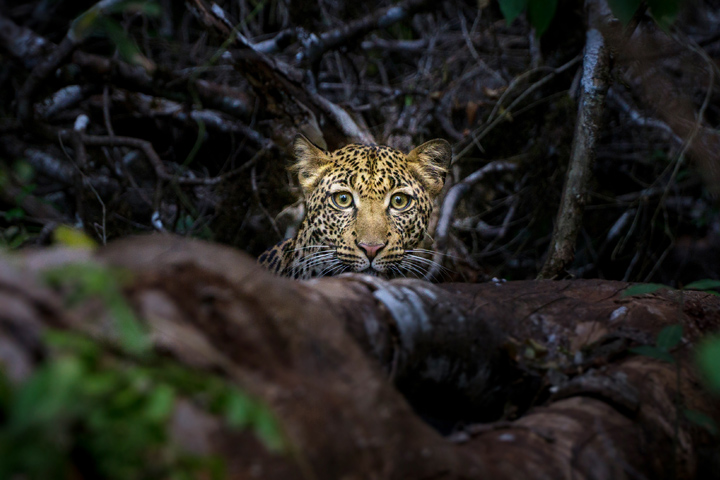
After the anti-climax of our combined fears, it’s now a straight shoot down to Marsabit town. As the tyres finally kiss the tarmac for the first time in six days, I swear I hear the car wheeze out a sigh of relief, as do we. After a quick lunch and some downtime, late afternoon finds us in Marsabit National Park where we get to view elephants at one of the crater lakes and also follow a leopard along the road for 15 minutes. Funny how these things happen just when you’re winding down your expectations of a trip.
That evening back at the hotel, the highlights of our adventure replay in my mind. Tomorrow we will be back in the city far from the almost other-worldly landscapes of Northern Kenya and Lake Turkana. Some friendships formed and some strengthened, some disappointments and some unexpected surprises, conquering the unknown and choosing to embrace the unfamiliar. This is the very essence of adventure, this is what we seek on the road.
Count Teleki would be proud.
PRACTICALITIES: The road from Nairobi to Ngurunit takes approximately 10 hours. The fenced Lasamu campsite offers basic ablutions and a roof under which to unfurl your sleeping bag, costing Ksh 1,000 per person. Leaving Ngurunit, head towards the wind farm. The road deteriorates after the wind farm as it winds down to the lake shore, and it takes roughly four to five hours to reach Loiyangalani from Ngurunit. Palm Shade offers shaded camping for Ksh 500 per person. The road to Kalacha, initially following the lake before heading east towards North Horr, takes about six hours. Stay at either the AIC Mission or the Catholic Church, which has basic but comfortable rooms starting at Ksh 800 per person. The following day takes you across the Chalbi desert towards Maikona, and then to Marsabit. The journey takes around five to six hours. It is a seven to eight-hour drive back to Nairobi. Where to stay in Turkana
Would you like us to plan your road trip to Turkana? Let us plan your unforgettable adventure up north.
Kenyan Camper blogs about travel in Kenya, with an emphasis on camping, at www.thekenyancamper.com
Our Top Experiences
SEEN SOMETHING YOU LIKE?
Enquire now and our team will create a custom itinerary tailored to your preferences.

CONTACT
enquiries@nomad.africa
Tel: +254 708 238 738
Purple Nomad Ltd
PO Box 69671 - 00400
Mwanzi Avenue, Nairobi, Kenya



